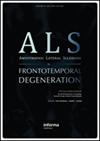“Companionship and a Little Fun”: Investigating Working Women’s Leisure Aboard a Hudson River Steamboat, July 1919
引用次数: 0
Abstract
This article provides an in-depth consideration of a single report penned on the night of July 27, 1919 by a private detective employed by New York City's Committee of Fourteen (1905–1932), an influential anti-vice and police reform organization. A close reading of the undercover sleuth's account, which details his experiences, subjective judgments, and general observations regarding moral and social conditions while aboard the Benjamin B. Odell, a palatial Hudson River steamboat, enables us to enrich our grasp of the courtship and pleasure-seeking practices popular among working women and men active in New York City's heterosocial and largely segregated amusement landscape during the so-called 'Red Summer.' Specifically, the report reveals how wage-earning women articulated femininity and sought individual freedoms, companionship, pleasure, and romance via Hudson River steamboat excursions. The relatively unsupervised atmosphere of such trips was appealing to some working women because it represented an affordable way to attain companionship, prohibited forms of amusement and entertainment, and sexual gratification, a way that sidestepped many of the reputational hazards typically associated with the search for such goods among mainland leisure spaces. Such opportunities were particularly valuable given the crackdowns on public sexuality and late-night amusement spaces that had followed America's entry into World War I in 1917 and the advent of 'wartime prohibition' on July 1, 1919. The article also supplies important contextual information required for proper appreciation of the investigation report in question, including a discussion of the methods and goals of the Committee of Fourteen and a brief overview of prior efforts by Progressive Era urban moral authorities to uncover and control 'white slavery,' gambling, and other 'vices' witnessed aboard steamboat excursions operating in and around New York, Chicago, and other coastal cities.“陪伴和一点乐趣”:调查哈德逊河汽船上职业妇女的休闲,1919年7月
这篇文章对1919年7月27日晚上的一份报告进行了深入的思考,该报告是由纽约市十四人委员会(1905-1932)雇佣的一名私家侦探撰写的,该委员会是一个有影响力的反恶习和警察改革组织。仔细阅读这位卧底侦探的描述,详细描述了他在哈德逊河上一艘富丽堂皇的轮船本杰明·b·奥德尔号上的经历、主观判断和对道德和社会状况的总体观察,使我们能够丰富我们对所谓的“红色夏天”期间活跃在纽约市异性恋和很大程度上隔离的娱乐景观中的职业女性和男性的求爱和寻求快乐的做法的把握。具体来说,该报告揭示了工薪女性如何通过哈德逊河汽船游览来表达女性气质,寻求个人自由、陪伴、快乐和浪漫。这种相对无监管的旅行氛围对一些职业女性很有吸引力,因为它代表了一种经济实惠的方式,可以获得陪伴、被禁止的娱乐和娱乐形式,以及性满足,这种方式避开了在大陆休闲场所寻找此类商品通常会带来的许多声誉风险。鉴于1917年美国加入第一次世界大战以及1919年7月1日“战时禁酒令”的出台,公共性行为和深夜娱乐场所受到了严厉打击,这样的机会尤为宝贵。这篇文章还提供了正确理解调查报告所需的重要背景信息,包括对十四人委员会的方法和目标的讨论,以及对进步时代城市道德当局先前为揭露和控制“白奴”、赌博和其他“恶习”所做的努力的简要概述。这些“恶习”是在纽约、芝加哥和其他沿海城市及其周边地区的汽船游览中目睹的。
本文章由计算机程序翻译,如有差异,请以英文原文为准。
求助全文
约1分钟内获得全文
求助全文

 求助内容:
求助内容: 应助结果提醒方式:
应助结果提醒方式:


